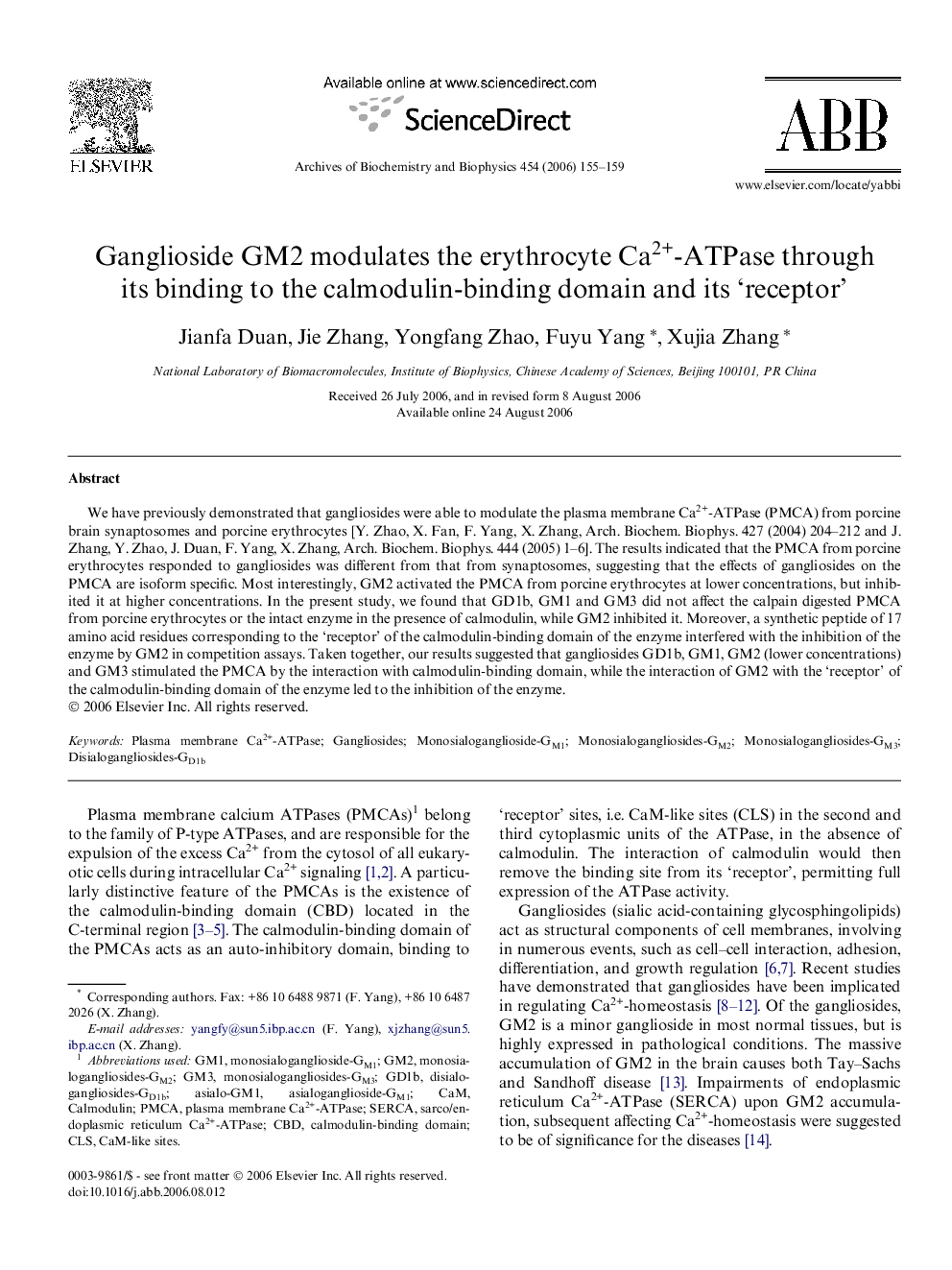| Article ID | Journal | Published Year | Pages | File Type |
|---|---|---|---|---|
| 1927453 | Archives of Biochemistry and Biophysics | 2006 | 5 Pages |
Abstract
We have previously demonstrated that gangliosides were able to modulate the plasma membrane Ca2+-ATPase (PMCA) from porcine brain synaptosomes and porcine erythrocytes [Y. Zhao, X. Fan, F. Yang, X. Zhang, Arch. Biochem. Biophys. 427 (2004) 204-212 and J. Zhang, Y. Zhao, J. Duan, F. Yang, X. Zhang, Arch. Biochem. Biophys. 444 (2005) 1-6]. The results indicated that the PMCA from porcine erythrocytes responded to gangliosides was different from that from synaptosomes, suggesting that the effects of gangliosides on the PMCA are isoform specific. Most interestingly, GM2 activated the PMCA from porcine erythrocytes at lower concentrations, but inhibited it at higher concentrations. In the present study, we found that GD1b, GM1 and GM3 did not affect the calpain digested PMCA from porcine erythrocytes or the intact enzyme in the presence of calmodulin, while GM2 inhibited it. Moreover, a synthetic peptide of 17 amino acid residues corresponding to the 'receptor' of the calmodulin-binding domain of the enzyme interfered with the inhibition of the enzyme by GM2 in competition assays. Taken together, our results suggested that gangliosides GD1b, GM1, GM2 (lower concentrations) and GM3 stimulated the PMCA by the interaction with calmodulin-binding domain, while the interaction of GM2 with the 'receptor' of the calmodulin-binding domain of the enzyme led to the inhibition of the enzyme.
Related Topics
Life Sciences
Biochemistry, Genetics and Molecular Biology
Biochemistry
Authors
Jianfa Duan, Jie Zhang, Yongfang Zhao, Fuyu Yang, Xujia Zhang,
